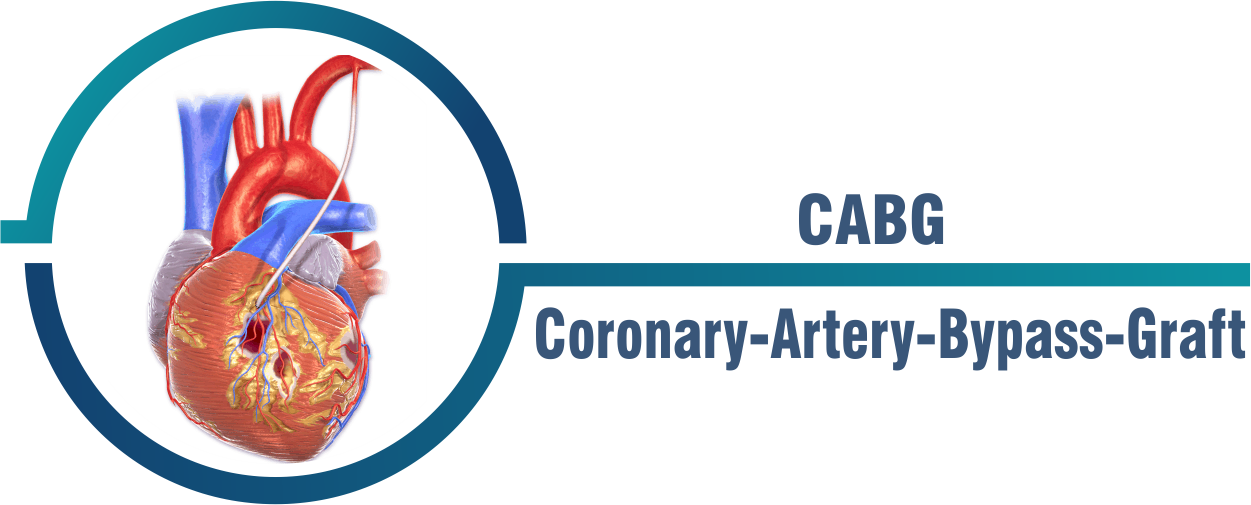
About CABG
CABG or Bypass Surgery is other names for coronary artery bypass grafting. It is a phrase used in medicine to describe the detournement of the artery's constricted region. In order to increase the blood supply to the cardiac muscles, this is done surgically. A graft, which is often removed from the leg's main vein, is used to restore blood flow. A blood vessel from another area of the body might also be utilized in some circumstances.
Open surgery can be used to do a CABG operation, however in recent years; minimally invasive coronary heart bypass surgery has become quite popular.
Depending on the patients' medical requirements, CABG surgery and minimally invasive valve replacement may be combined. In order to increase blood flow within the heart's walls, one or more constricted, obstructed, or diseased valves are removed during this surgery and replaced with synthetic or biological valves.
What are the different types of Heart Bypass Surgery?
Depending on how many of your arteries are blocked, there are 4 types of CABG surgery:
- Single Bypass Surgery – In this type of bypass surgery, only one artery is blocked.
- Double Bypass Surgery – In this type of bypass surgery, two arteries are blocked.
- Triple Bypass Surgery – In this type of bypass surgery, three arteries are blocked.
- Quadruple Bypass Surgery – In this type of bypass surgery, four arteries are blocked.
There are two primary CABG procedure types, and the use of a pump to maintain the cardiovascular system distinguishes them from one another. The two forms of CABG surgery are as follows:
-
CABG Open Heart Surgery: An artificial heart-lung machine must be used during this kind of surgery to ensure that the blood supply to every portion of the body is maintained. As the doctors open the patient's chest wall to perform the grafting procedure on the non-beating heart, the patient is placed on a heart-lung pump system.
-
Minimally Invasive CABG Surgery : Being performed on a pumping heart eliminates the need for an artificial heart-lung pumping equipment. To access the small devices needed to carry out the grafting process, the surgeons make a number of tiny incisions in the chest and around the heart.
Symptoms
The following signs and symptoms can indicate a coronary artery disease that may require a CABG:
- Chest pain, dyspnea or shortness of breath, and irregular heartbeats.
- Chest fluttering.
- Excessive edema in the hands and feet (edema).
- Negative Indigestion.
- Other vague symptoms, such as bodily aches, weariness, and a lack of strength, nausea, vomiting, etc.
- A chest condition known as angina is characterized by heaviness, pain, or tightness. Additionally, it is a sign of clogged or damaged arteries.
Risk Factor
The risks associated with minimally invasive coronary artery heart surgery are less than open-heart coronary artery bypass.
Investigations
Once the cardiologist determines that you have an elevated risk of coronary artery disease, they may recommend a few tests. The following are some of the frequent tests used to identify CAD:
- Chest X-ray.
- Electrocardiogram (EKG).
- Exercise test to see if breathing is normal.
- Blood testing to look for cardiac muscle damage-related enzymes.
- Cardiac catheterization to assess the severity of coronary artery damage.
| Procedure | India | Turkey | Dubai |
| (Price in USD) | (Price in USD) | (Price in USD) | |
| Heart Bypass Surgery (CABG) | 5500 | 12000 | 31000 |
| Heart Bypass - Minimally Invasive CABG | 6500 | 12000 | 30000 |
| Coronary Artery Surgery | 5500 | 10000 | 29000 |
| Redo CABG | 6000 | 9000 | 29500 |
Note : This is an approximate cost and may vary depending on various condition of the patient health after physical evaluation.
Treatment Options
Side Effects
- Potential for bleeding at the graft site and from other sources.
- Issues with the heart's rhythm Blood clots.
- Kidney disease.
- Symptoms of anesthesia.
- An infection at the location of the incision made to open the chest after surgery.
Benefits
Success Rate
Approximately 98% of CABG surgeries are successful. Patients with severe damage to the coronary heart muscle and those who have significant artery blockage may be at higher risk. Nowadays, older patients receive the majority of CABG procedures, primarily on people without additional risk factors like diabetes or renal disease.
